In August 1987, the 945-foot-tall One Liberty Place officially opened at 1650 Market Street as Philadelphia’s tallest building, soaring above the long-held unofficial height limit of 548 feet, set by the tower of City Hall in 1901. This remarkable building ultimately led to a watershed of new skyscraper construction over the ensuing half decade, creating the skyline that defines the city today. In this feature, Philadelphia YIMBY explores the building’s progress from concept to reality, as well as its tenure as the city’s tallest skyscraper for 21 years.
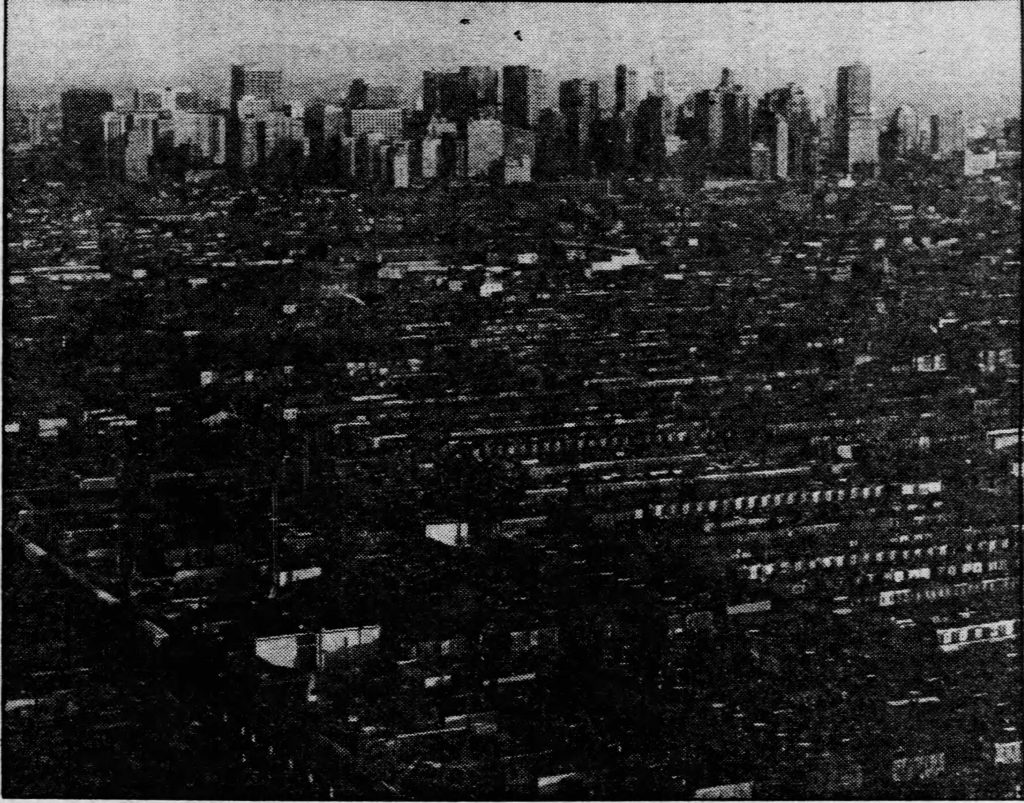
Philadelphia skyline three months before the groundbreaking of One Liberty Place. Photo from Philadelphia Daily News
In the early 1980s, developer Willard G. Rouse III of Rouse and Associates set his sights on a city block in Center City with low-rise buildings and a multi-level parking garage, next to the 491-foot-tall PNC Bank Building that was rising at 1600 Market Street. Rouse eventually won the bid in 1983 and selected noted architect Helmut Jahn to design two skyscrapers. Rouse originally planned to build a single tower, but by the time the project was submitted to the City Planning Commission on April 5, 1984, the plans revealed a pair of 65-story and 55-story skyscrapers placed diagonally from each other, with a shorter hotel situated along South 17th Street.
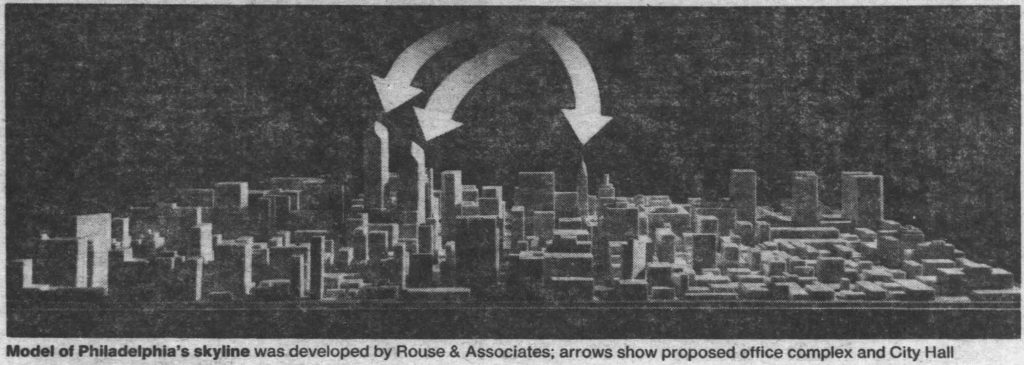
“Rouse Towers” massing. Photo by Philadelphia Daily News, model by Murphy/Jahn

Liberty Place early design. Photo by Philadelphia Daily News, model by Murphy/Jahn
A large number of residents opposed the towers rising above the statue of William Penn atop City Hall, which would violate the “Gentlemen’s Agreement” protecting the supremacy of the city’s centerpiece. Poll results showed more than half of participants opposing the mega development, along with illustrations antagonizing the monoliths that were bound to transform the skyline. Nevertheless, phase one of the project broke ground on May 13, 1985, with development boosters lost among the NIMBY mob. Excavation and the foundation were completed by the end of 1985.
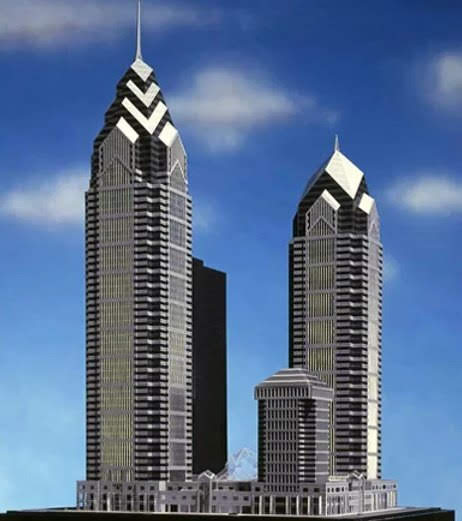
Liberty Place with One Liberty Place finalized. Photo by Philadelphia Daily News, model by Murphy/Jahn
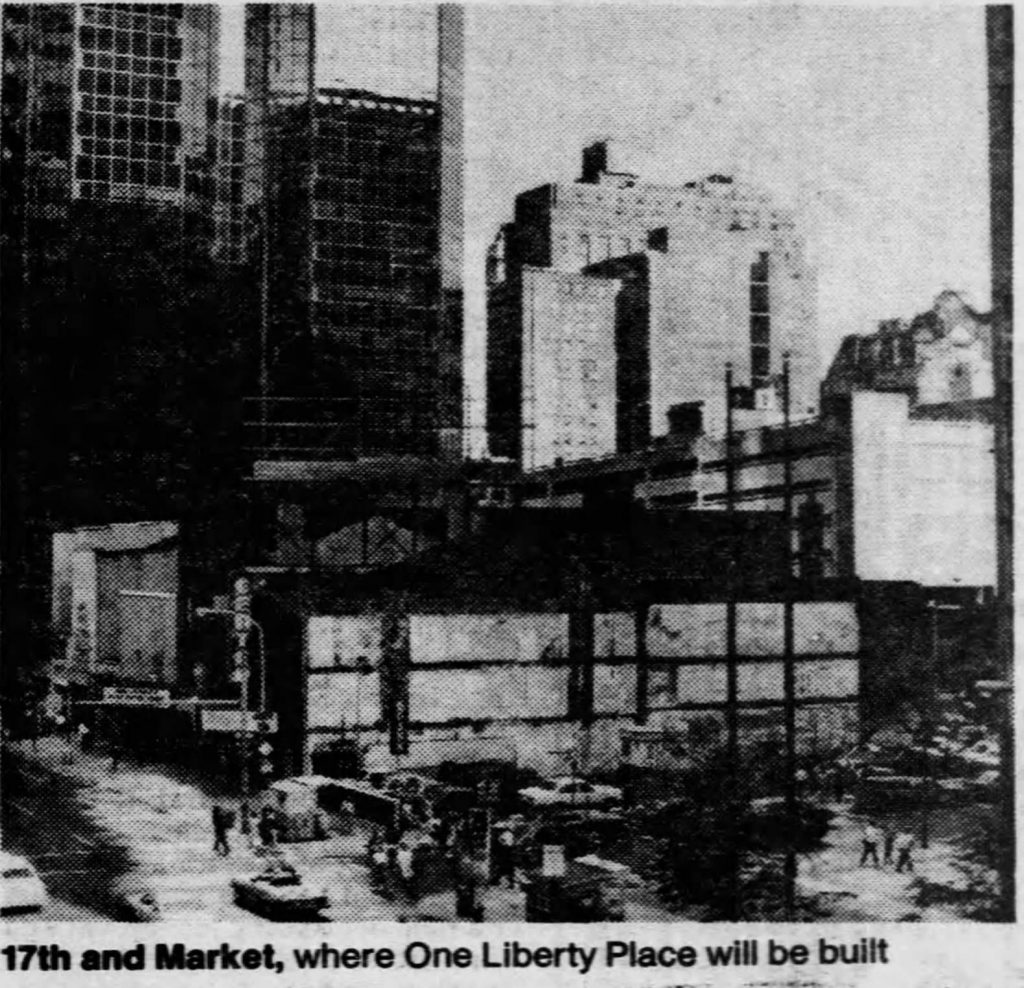
One Liberty Place groundbreaking May 13, 1985. Photo from Philadelphia Daily News
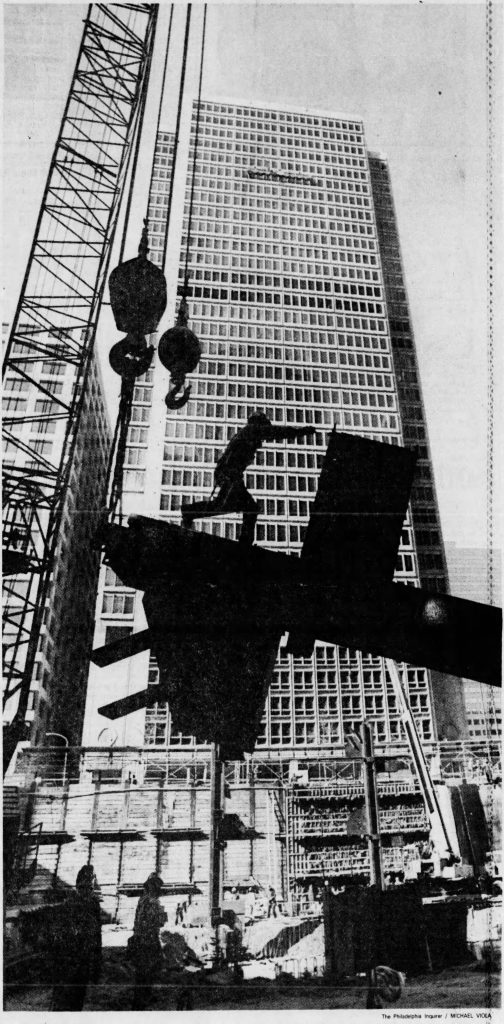
First beams of One Liberty Place. Photo from the Philadelphia Inquirer
The first beams of the skyscraper were laid in the beginning of January 1986. Workers quickly put together the large base of the building, with the office floors beginning construction by April. Two months later, two tower cranes were popping out of the skyline, visible from a number of spots across the cityscape, such as the Philadelphia Museum of Art and the Belmont Plateau.
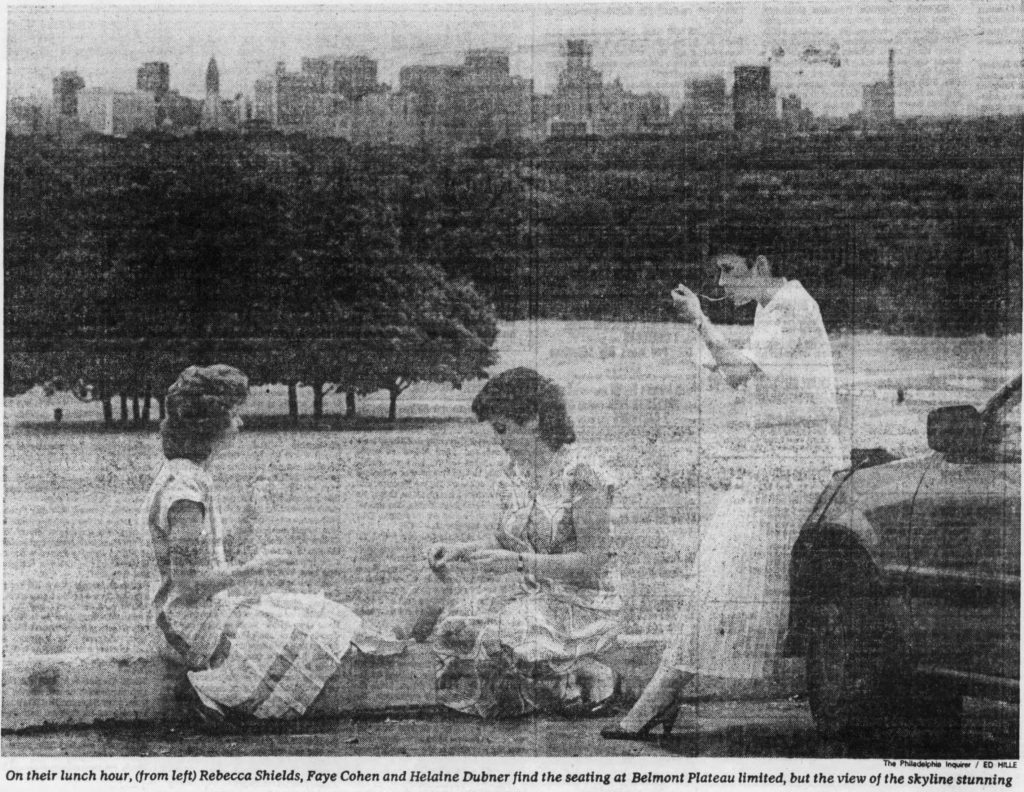
Philadelphia skyline from Belmont Plateau July 1986. Photo from the Philadelphia Inquirer
By August 1986, the structure had passed the halfway mark. In September, the tower finally breached the height of City Hall.
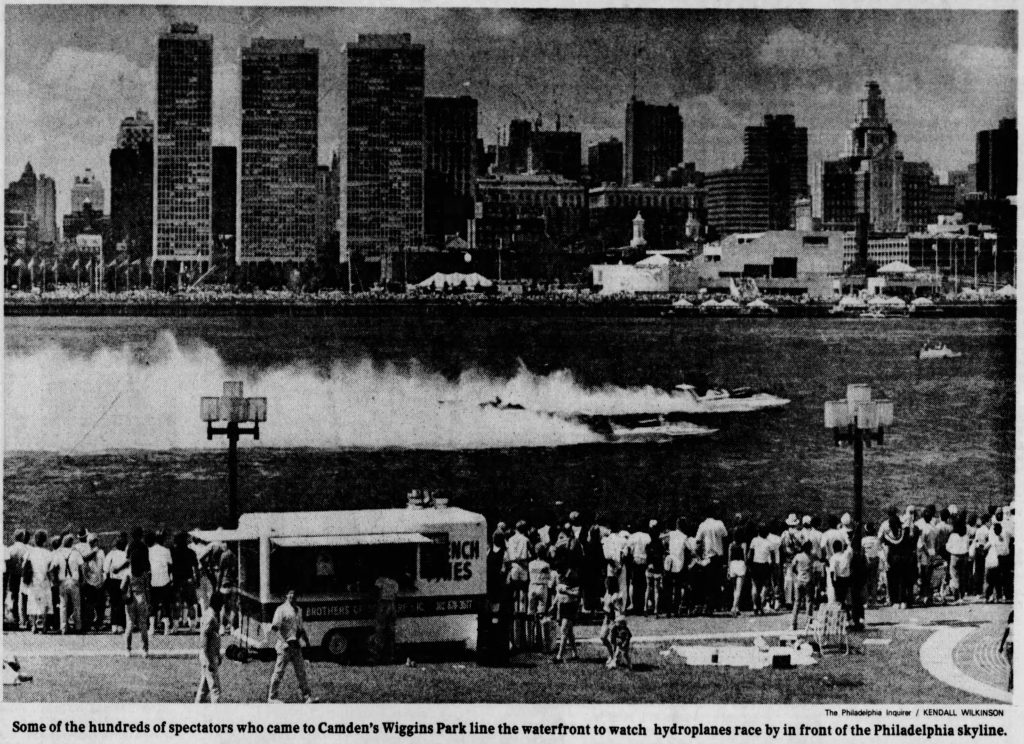
One Liberty Place climbing into the Philadelphia skyline from the Camden Waterfront. Photo from the Philadelphia Inquirer
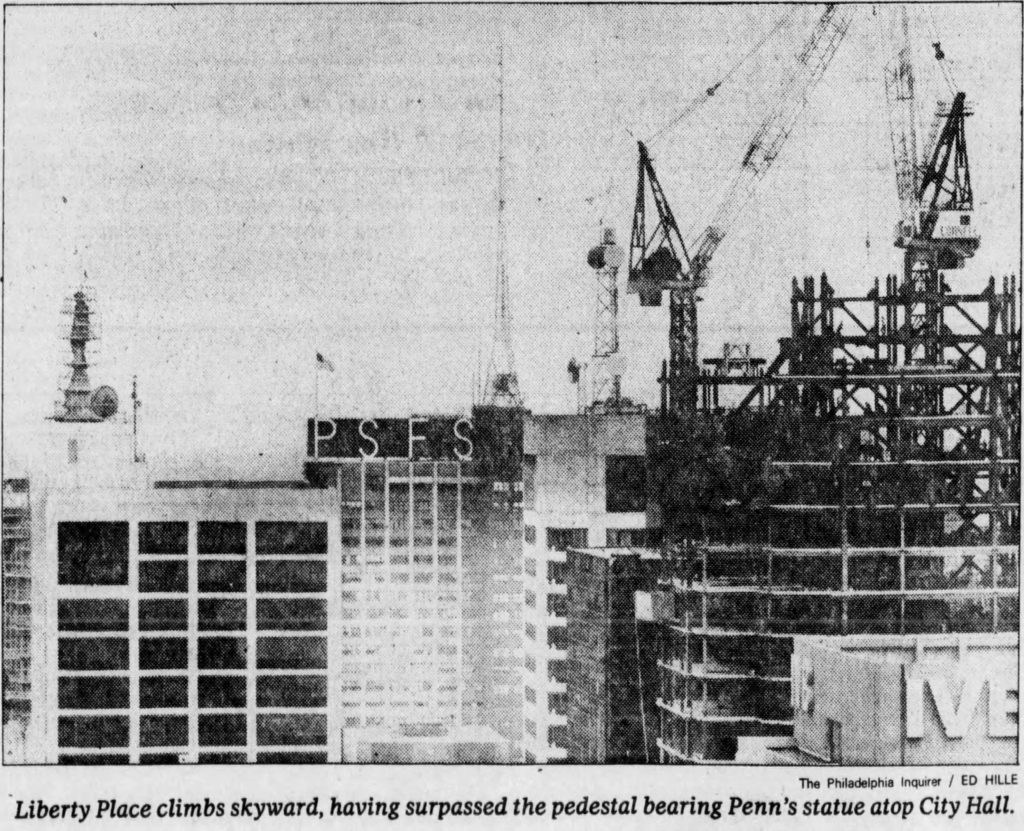
One Liberty Place becomes the tallest structure. Photo from the Philadelphia Inquirer
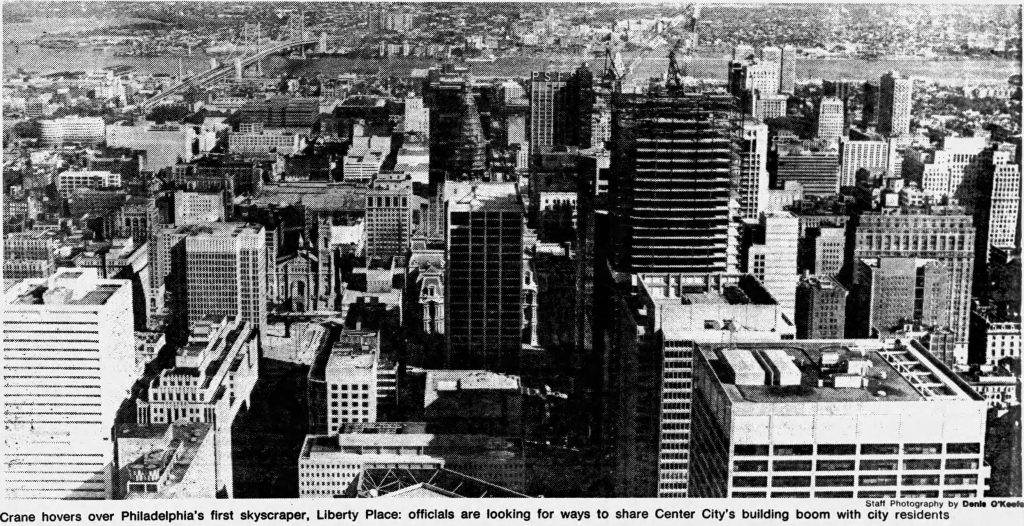
One Liberty Place construction aerial. Photo from Philadelphia Daily News
Over the next few months and for most of the following year, development supporters cheered as the skyscraper bolstered its mark on the skyline. Twelve days before Christmas, the final story was completed and a topping-out ceremony was staged, complete with fireworks and a laser light show.
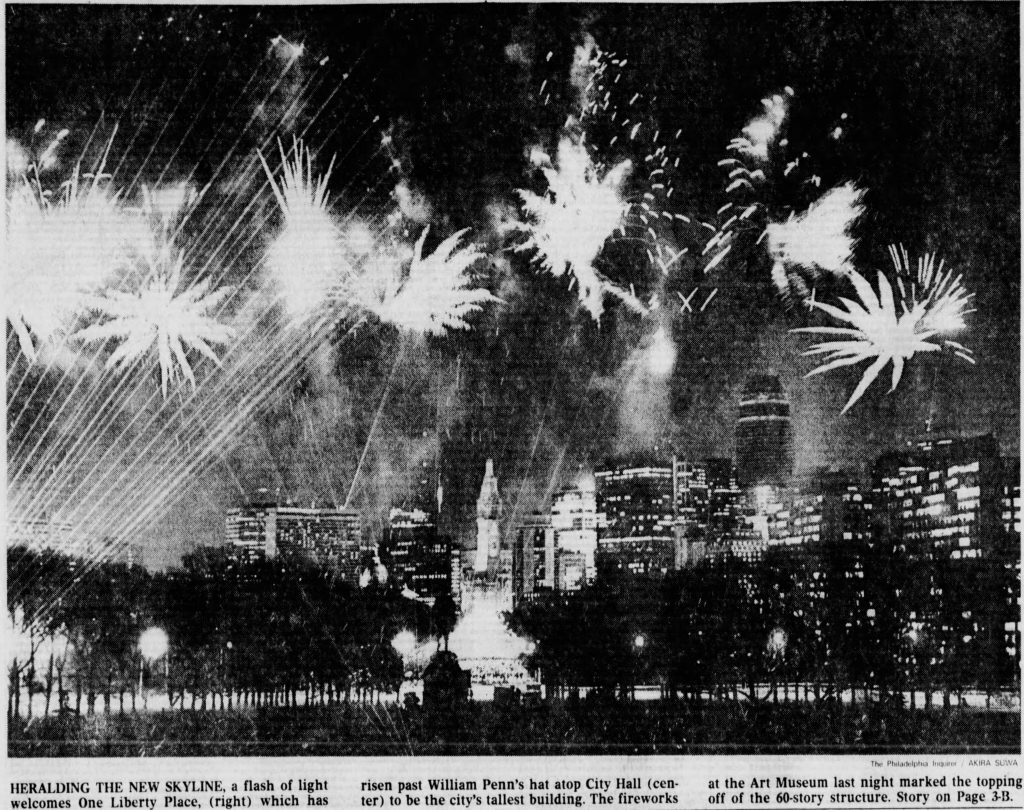
One Liberty Place topping out display. Photo from the Philadelphia Inquirer
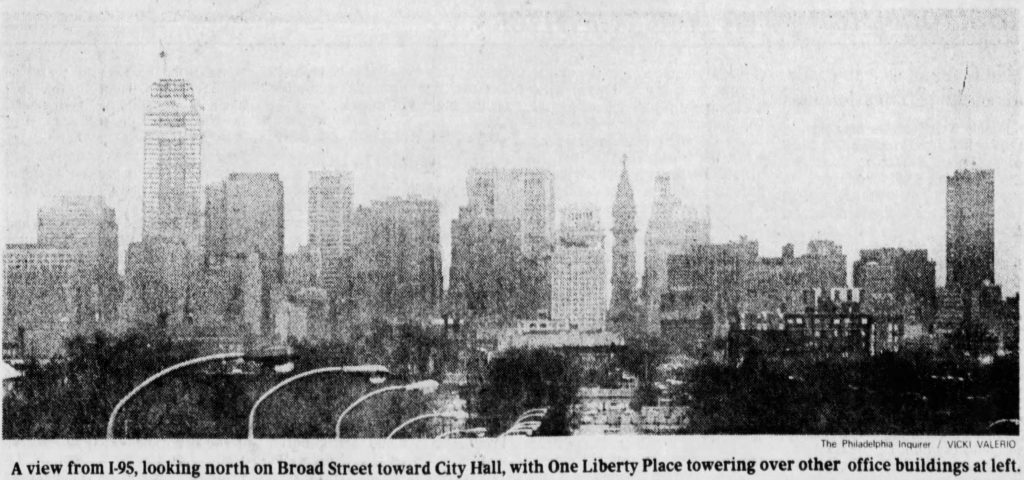
One Liberty Place one day after topping out. Photo from the Philadelphia Inquirer
Despite the ceremony, the crown still remained to be assembled, with work reaching the base of the spire by the end of January 1987. By the time of the building’s scheduled topping out date a few weeks later, the spire was just being painted at Colonial Processing Company in Camden, NJ.
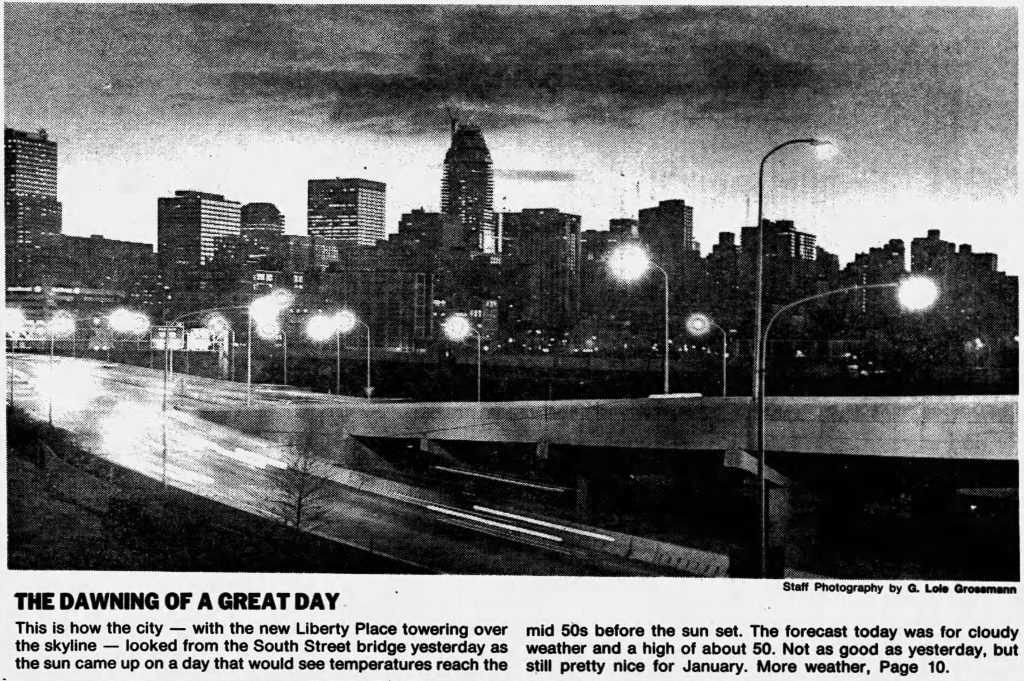
One Liberty Place steel structure nearly complete. Photo from Philadelphia Daily News
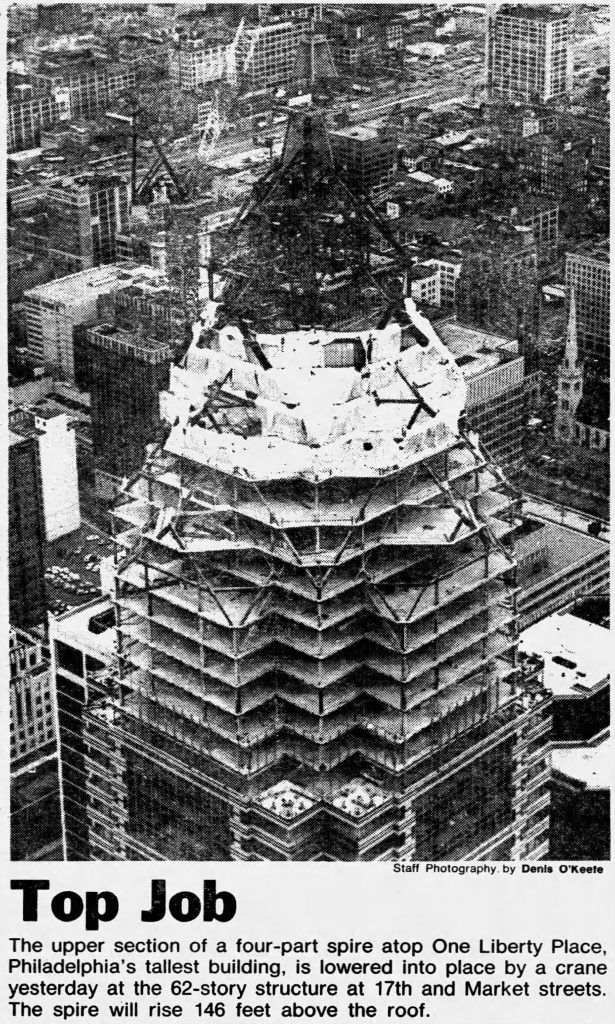
One Liberty Place construction aerial. Photo from Philadelphia Daily News
Two major pieces of the bottom of the spire had been placed above the crown in April, with two more sections added by May. On May 11, the final piece was hoisted into place at the pinnacle, but welding problems delayed the topping out. Eventually Bethlehem Steel, the steel contractor, resolved the issues, and the tower was completely topped out on May 28, 1987.
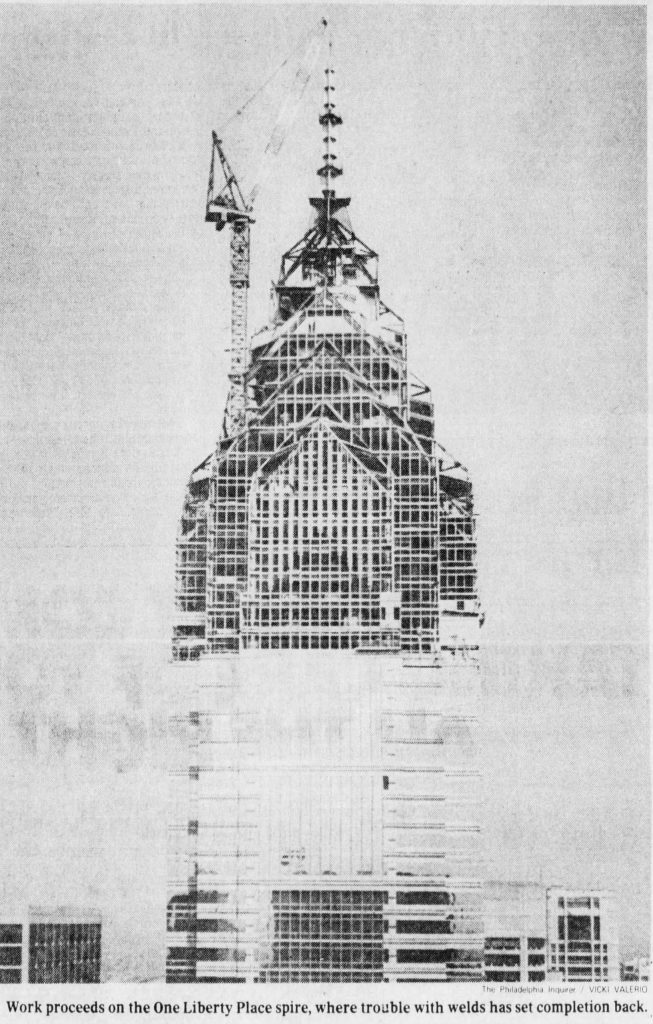
One Liberty Place before topping of the spire. Photo from the Philadelphia Inquirer
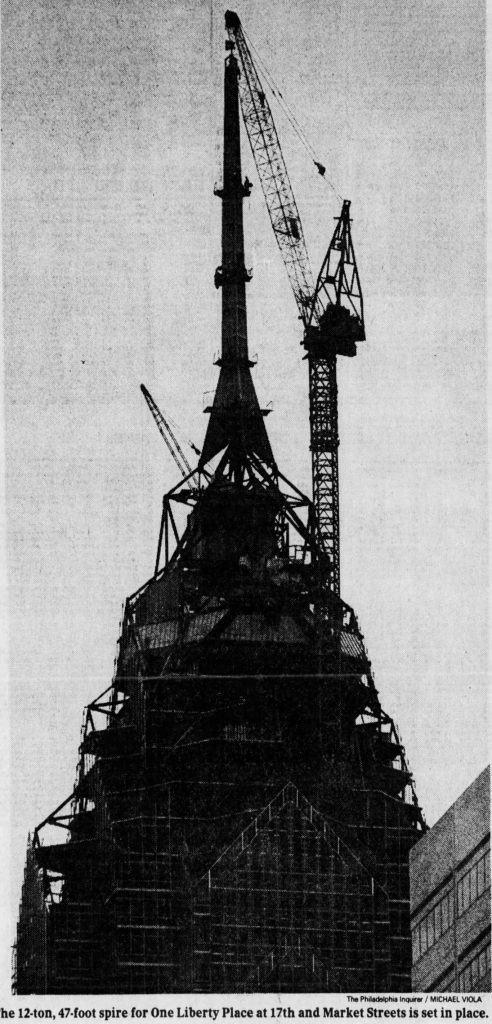
One Liberty Place topping out spire. Photo from the Philadelphia Inquirer
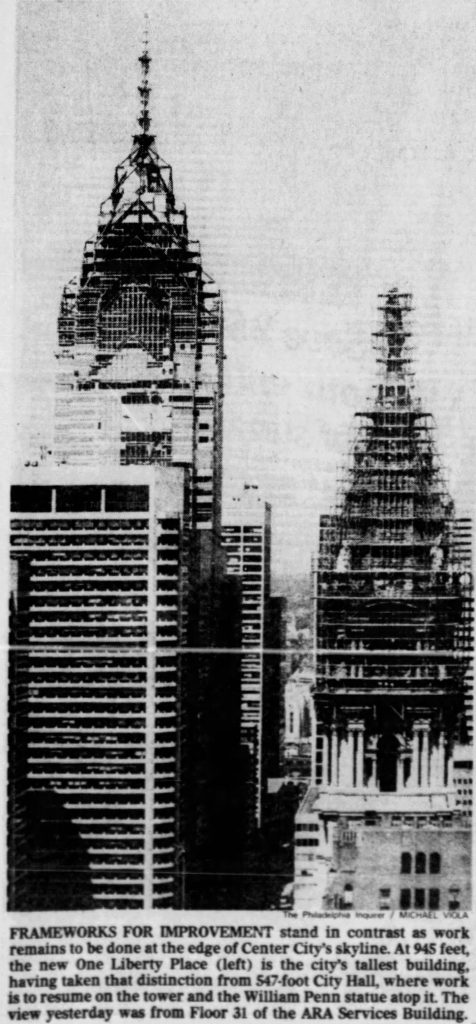
One Liberty Place shortly after the crane take down from what is now Jefferson Center. Photo from the Philadelphia Inquirer
Just under two months after the topping out, the crane was finally taken down from the northwest side of the of the building. At that point, the cladding was already assembled up to the crown, just floors below the angled portion.
The building’s first tenant was rail service provider Conrail, which moved in in August, filling one-third of the tower. The glass façade was zipped up by the start of winter and the crown and spire lights were turned on for the first time on December 2, 1987.
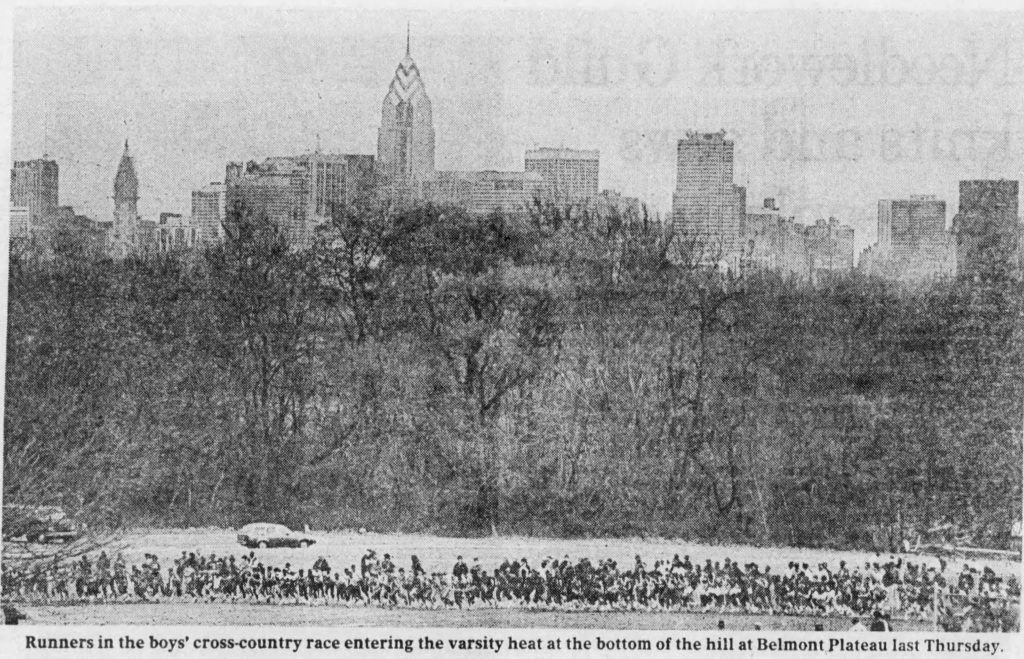
One Liberty Place completed in late 1987. Photo from the Philadelphia Inquirer
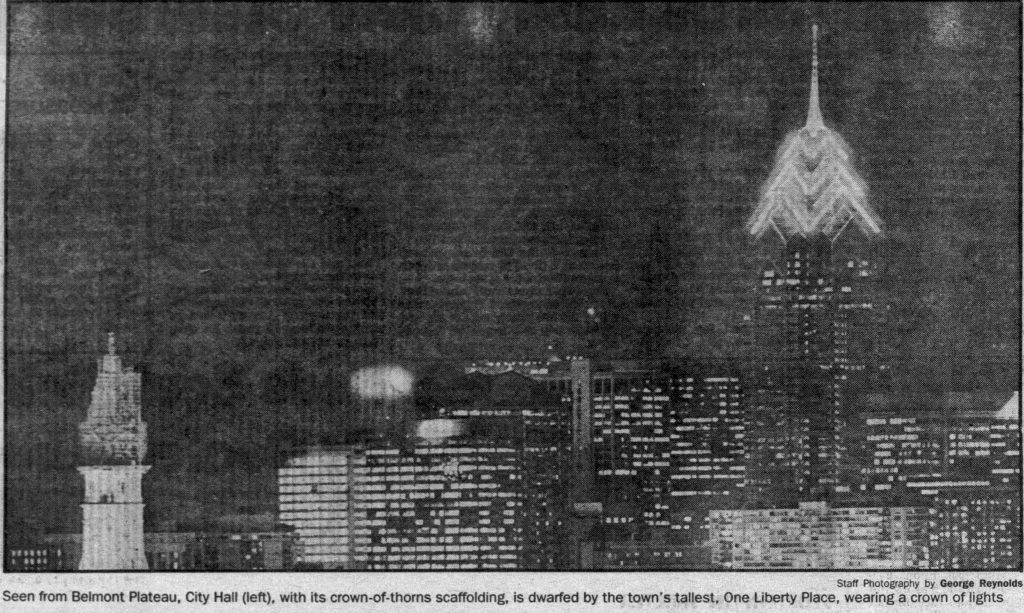
One Liberty Place decorative lighting. Photo from Philadelphia Daily News
After the building broke the “Gentlemen’s Agreement” by surpassing the statue of William Penn atop City Hall, it was said to invoke “Billy’s Curse,” which prevented the city’s sports teams from winning any championships. The curse was lifted in 2008, when the Phillies won the World Series shortly after a small statue of William Penn was placed atop the 973-foot tall Comcast Center, which surpassed One Liberty Place as the tallest building in Philadelphia earlier that year.
One Liberty Place will forever be remembered as the building that broke through limits, ignoring both curses from the city’s founder statue and cursing from the citizens who opposed its construction. One Liberty Place paved the way for all of the skyscrapers that followed it, such as Two Liberty Place, Three Logan Square, and the Comcast Technology Center, currently the city’s tallest skyscraper, which YIMBY covered in a prior feature.
Below, Philly YIMBY presents exclusive photos, digitally altered to show how the skyline would have looked in 1987, upon the completion of One Liberty Place.
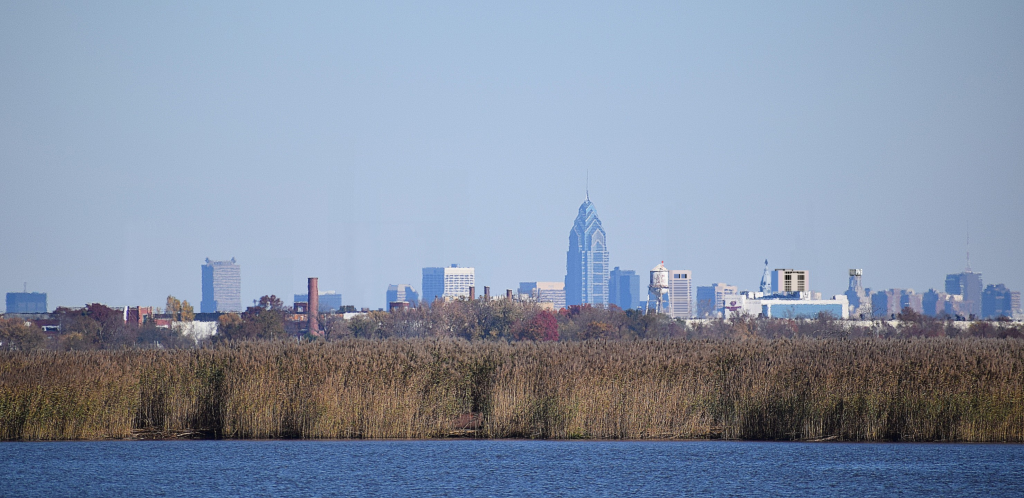
Philadelphia skyline 1987 from Swedesboro, New Jersey. Photo and edit by Thomas Koloski
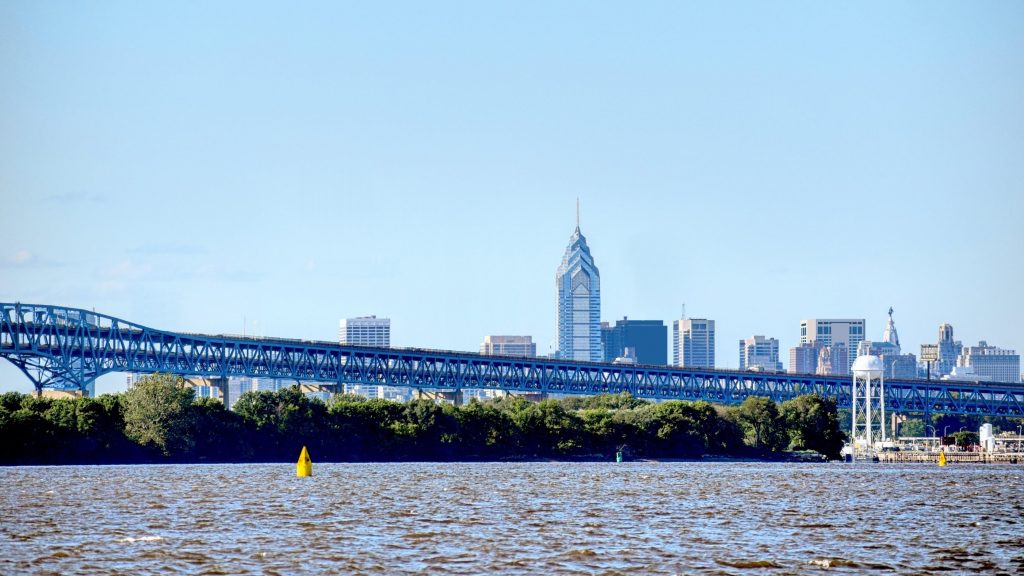
Philadelphia skyline 1987 from Red Bank Battlefield. Photo and edit by Thomas Koloski
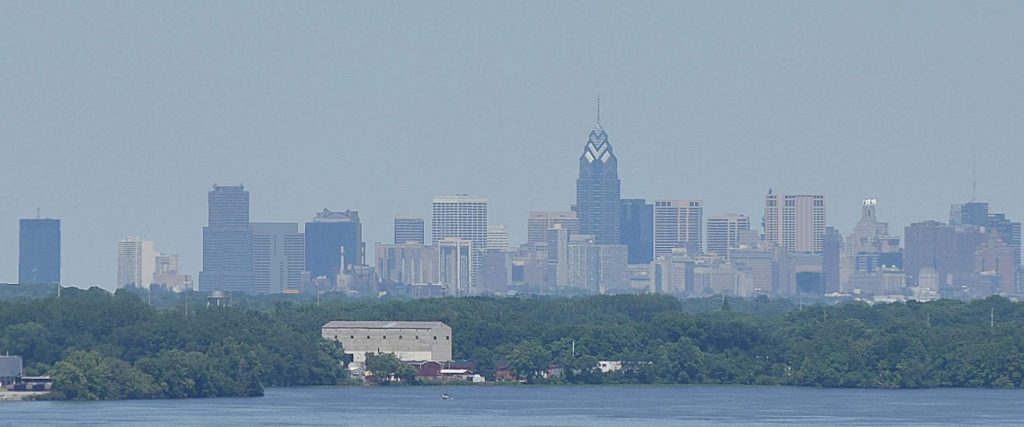
Philadelphia skyline 1987 from the Commodore Barry Bridge. Photo and edit by Thomas Koloski
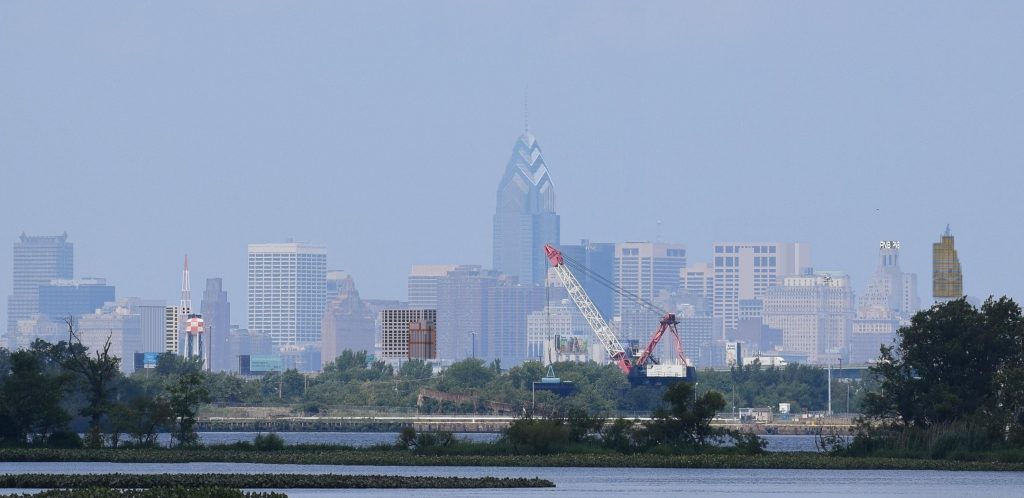
Philadelphia skyline 1987 from Westville, New Jersey. Photo and edit by Thomas Koloski
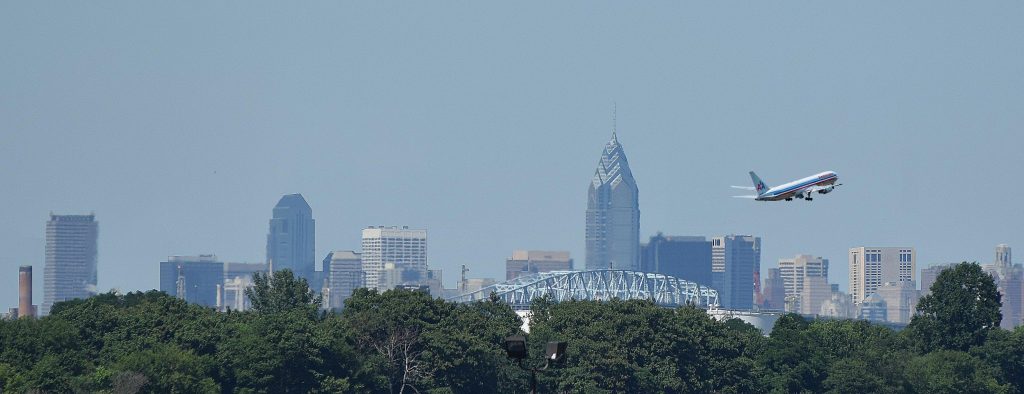
Philadelphia skyline 1988 from Paulsboro, New Jersey. Photo and edit by Thomas Koloski
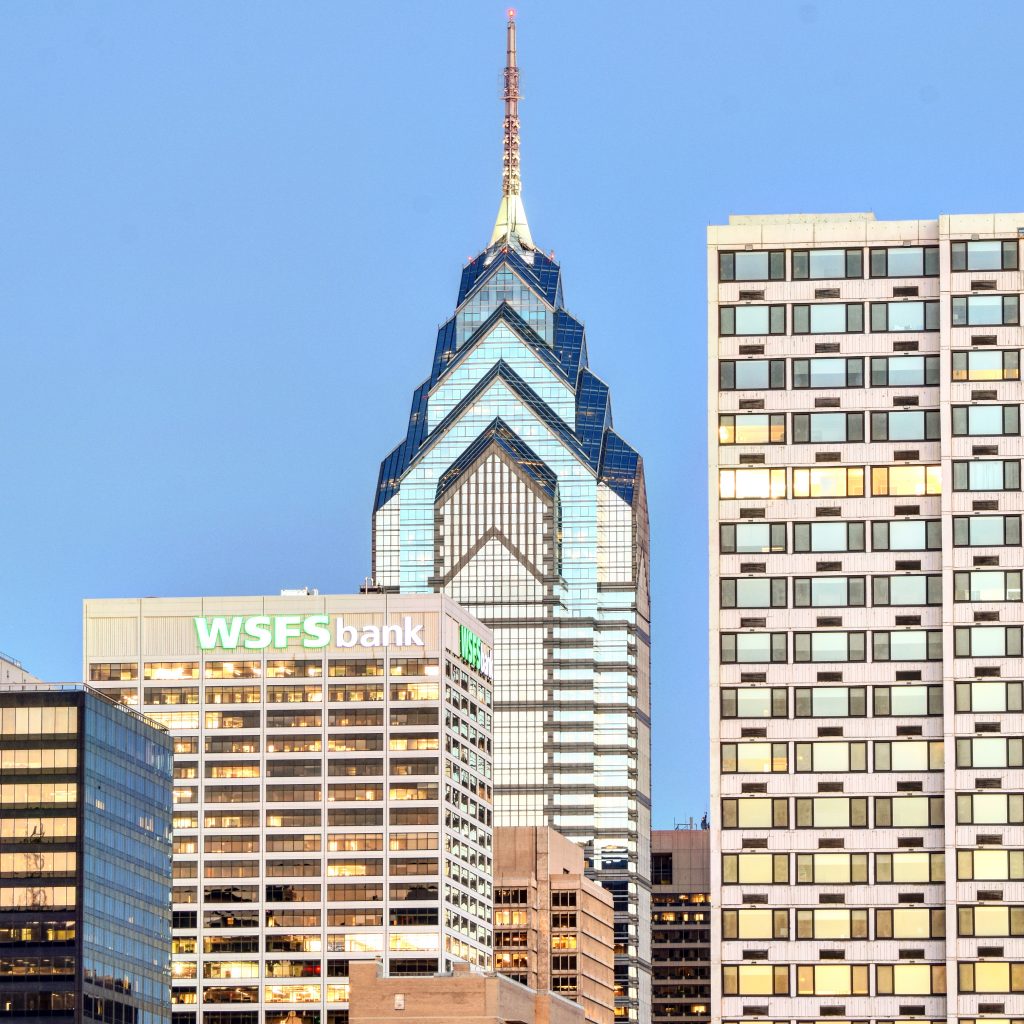
One Liberty Place from Cira Green. Photo by Thomas Koloski
Subscribe to YIMBY’s daily e-mail
Follow YIMBYgram for real-time photo updates
Like YIMBY on Facebook
Follow YIMBY’s Twitter for the latest in YIMBYnews

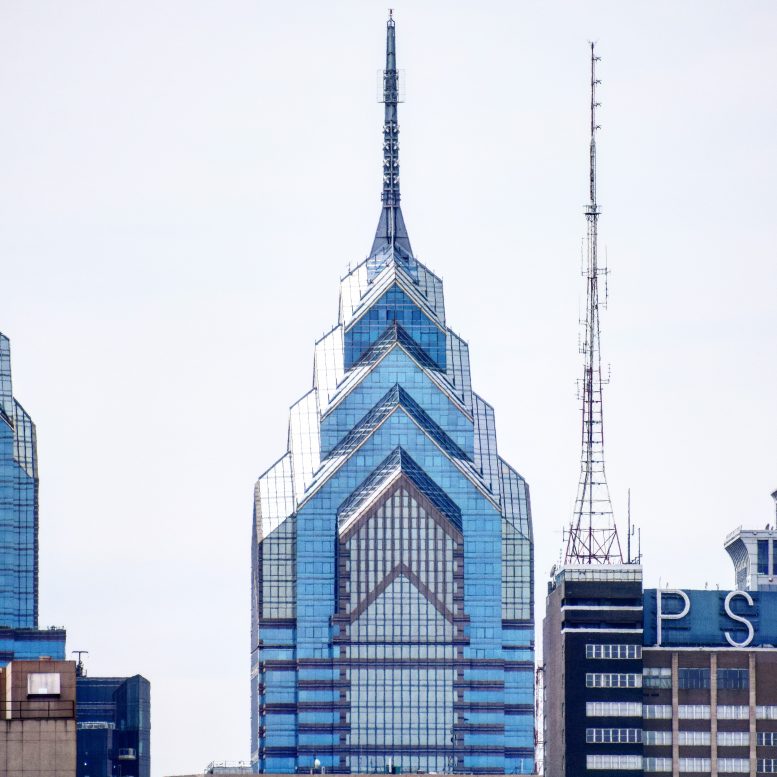
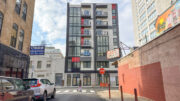
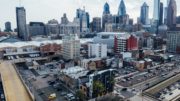
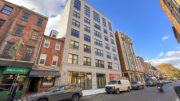
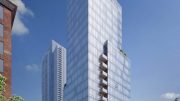
Great photo collection and chronology. Where would Philly be today if this project had failed to get off the ground?
I remember those happy days very well; Liberty Place looked amazing; it still does now but back then you could see it at night and it was amazing at night; it seemed like a dream come true for the city; a bright beacon. When they shot the fireworks from the Art Museum to celebrate the building of the building it was before they completed the building; before the glass walls were installed but when the building was completed it was the tallest building between New York and Chicago. My father who worked on the building said that it between the 8th and 12 tallest building in the country but there was some confusion to how it would be to some workers because there were rumours that it would be as tall as 999′; there were other rumours on the height of Liberty 2 as well.
Liberty 1 was the tallest building since 1894 when it surpassed City Hall and with the beauty of City Hall it was really amazing that from what I remember at that time almost nobody alive in the 1980 remembered when City Hall was built so for those who were young it was exciting to see Liberty 1 rise; but many didn’t want the change when it was announced a few years earlier like around 1984 or so.
Liberty 1 changed everything; it changed the skyline for the better in a dynamic way.
This article is incorrect.
Willard Rouse had TWO proposals, the first proposal was for THREE 40 story towers that Rouse said would cast shadows around the city block.
Then he displayed his second proposal, two slender towers, connected to a shopping center that would allow sunlight onto the streets and into the shopping center.
I should know this history because I was there at the proposal and witnessed the presentation myself.
Through the research I did not find any information on that. However I’ve recently bought a book by Helmut Jahn that was published in 1986 shows a three tower sketch. Be on the lookout for another feature on One Liberty!
Having seen Willard Rouse in person, he was a nice guy!
I genuinely liked him.
Unfortunately, he was a heavy smoker and his death was terrible!
Willard Rouse was responsible for Liberty Place, the Pennsylvania Convention Center, the Kimmel Center for the performing arts and (most don’t know) his plans that eventually became the Comcast Center.
Former Mayor John Street really deserves the credit because (ar the time), he was on the city planning commission who helped negotiate the deal for breaking the height limit.
Rouse offered to pay the city to reimburse for the costs it incurred in negotiating the deal.
We lost a true gentleman when Rouse died.
Rouse was indeed a wonderful and devoted Philadelphia citizen even though he resided outside the city proper. Recall the time the historic Jacob Reed building was slated to become a Rite Aid. Rouse preemptively bought the building and lined up Barnes & Noble as a more suitable tenant instead. Sadly they moved out within a few years, following the Meridien Plaza fire, which put a big damper on that block’s retail and the Jacob Reed building did eventually become a drug store after all, presently CVS.
The expose and history is outstanding! I wonder about photography newspaper photos instead of 1987 look like 1887 black and white newspaper photos , reproduced is that it ? Very nice buildings. I’am going to watch movie shortly World War Z shortly may catch a glimpse. And I did Kudo’s to One Liberty Plasa and City of Philadelphia!
My fave art deco buildings are Livery 1 and 2.